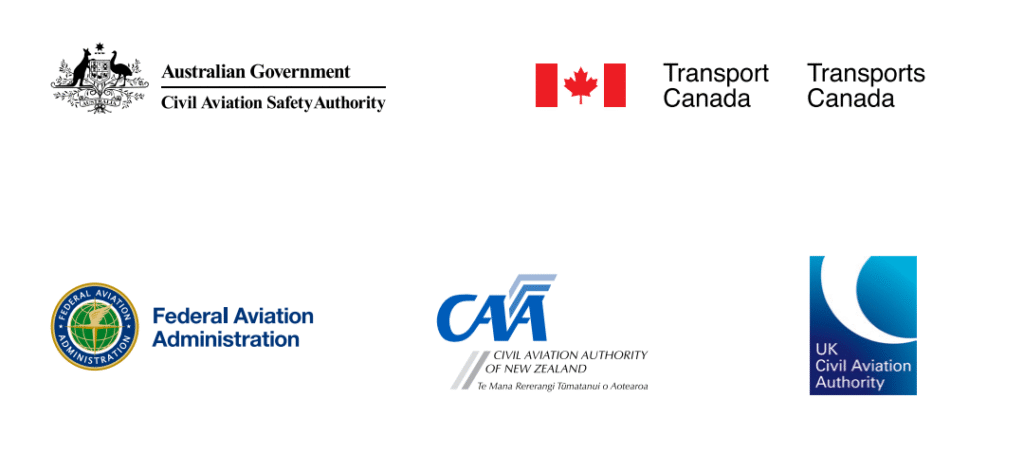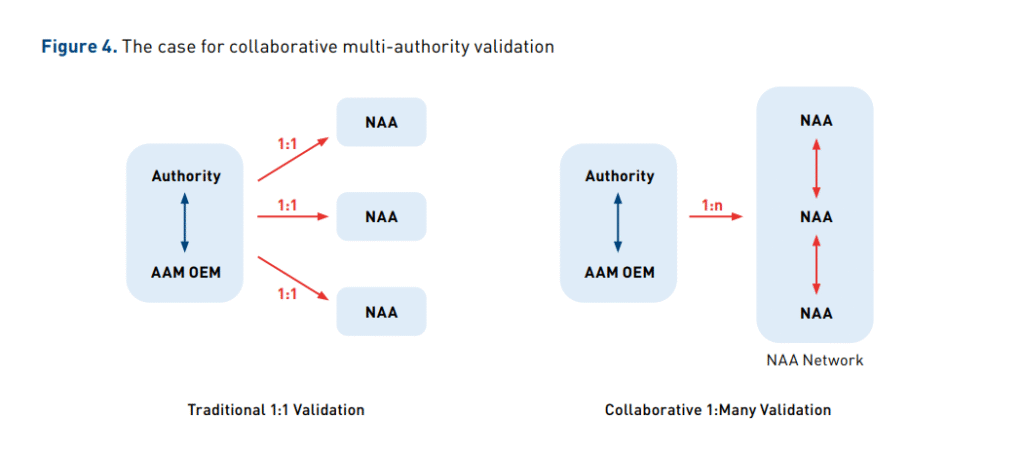Cutting red tape, the Five Eyes nations, which include the United States, United Kingdom, Australia, Canada, and New Zealand have mutually agreed to streamline certification of Advanced Air Mobility (AAM) aircraft such as eVTOLs and hybrid VTOLs within the National Aviation Authority (NAA) Network.
The aviation industry is on the cusp of a transformative shift with the advent of electric vertical takeoff and landing (eVTOL) aircraft. These innovative vehicles promise to revolutionize urban mobility by offering quiet, emission-free, and efficient transportation solutions. However, integrating such advanced technologies into the existing airspace requires a robust and harmonized certification framework. Recognizing this need, the Five Eyes countries—Australia, Canada, New Zealand, the United Kingdom, and the United States—have initiated a collaborative effort to streamline the certification process within the National Aviation Authority Network for advanced air mobility (AAM) aircraft, with Joby Aviation at the forefront of this initiative.
This is a huge development which will bring a tremendous efficiency to a process that would otherwise be full of red tape and frustration, as explained below:
“It’s an incredibly exciting time to be in aviation as we work to integrate new technologies safely into the NAS.”….. “Enabling the integration of new entrants is a priority and we’re committed to doing whatever we can to foster innovation while also staying true to our safety mission.” – FAA Acting Administrator Chris Rocheleau.
“The NAA Network sets a global precedent for a unified and strategic pathway in AAM certification.” – National Aviation Authority Network
“If you ever wanted to see a bat signal go up into the air and say AAM is here, eVTOLS will be built, they’ll be certified and brought around the world, that’s today. And we couldn’t have done that without the leadership of the Secretary, the President of the United States, and I’m extremely grateful for all their support for this industry. I do think that today is an incredible moment, and one that will actually be remembered, where the companies came together, the regulators came together, the administration came together, and all as one defined what the future of aviation is going to look like. I’m very grateful. Thank you. ” – Adam Goldstein, CEO and founder of Archer
Archer’s founder and CEO Adam Goldstein further expressed his gratitude to the President and his administration, which coincides after President Trump’s Executive Order earlier this month:
“The Administration has made it clear: leadership in advanced aviation is a priority for President Trump and for the United States. This alliance paves the way for the international deployment of our Midnight aircraft, and is another step towards bringing these aircraft to skies around the world. Thank you to the FAA, to the DOT and our other partners in the industry.” – Adam Goldstein, Founder and CEO of Archer Aviation
Joby’s founder and CEO JoeBen Bevirt also lauded the NAA Network for their tremendous efforts and success. Mr. Bevirt also highlighted the significance of the agreement set forth by the NAA Network and what it means to the AAM industry:
“Today’s milestone fundamentally underpins our approach to bringing our aircraft to markets around the world. We applaud these authorities for their efforts to coalesce around a common approach to approving eVTOL in their respective countries. We’re grateful to the founding members of the NAA Network for their vision and for making this initiative a reality.” – JoeBen Bevirt, Joby founder and CEO
Benefits for eVTOL Manufacturers
- Accelerated Certification Process The mutual recognition of certifications among these nations allows manufacturers to leverage approvals from one jurisdiction to expedite the process in others. For instance, Joby Aviation’s application for aircraft certification in Australia leverages a bilateral agreement between U.S. and Australian regulators for mutual recognition of aviation approvals and certifications . This approach reduces redundancy and accelerates the approval timelines for novel aircraft types.
- Cost Savings By aligning certification standards and sharing best practices, manufacturers can avoid duplicative testing and documentation efforts. This harmonization leads to significant cost savings, as companies do not need to conduct separate certification processes for each country. Additionally, the streamlined process reduces the administrative burden, allowing manufacturers to allocate resources more efficiently.
- Global Market Access The standardized certification framework facilitates easier entry into international markets. Manufacturers can expand their operations globally, offering their eVTOL aircraft in multiple countries without the need for extensive modifications to meet varying regulatory requirements. This global reach enhances the commercial viability of eVTOL technologies.
Advantages for Aircraft Operators
- Simplified Operations With standardized certification, operators can deploy eVTOL aircraft across different regions without the need for extensive retraining or operational adjustments. This consistency simplifies fleet management and operational planning.
- Enhanced Safety Standards The collaborative efforts among aviation authorities ensure that eVTOL aircraft meet rigorous safety standards. For example, the European Union Aviation Safety Agency (EASA) has committed to holding eVTOL aircraft intended for commercial passenger-carrying operations to the same aircraft reliability standards used for commercial airliners . Such stringent safety criteria enhance public confidence in eVTOL operations.
- Operational Efficiency The harmonized certification process reduces delays in aircraft deployment, allowing operators to commence services more swiftly. This efficiency translates to quicker returns on investment and the ability to meet growing demand for urban air mobility solutions.
Practical Focus
Streamlining eVTOL certification processes through international cooperation—like the Five Eyes agreement—does more than just speed things up. It also enhances safety by allowing aviation authorities and manufacturers to focus resources where they matter most. Here’s how removing redundancy and harmonizing regulations can lead to better safety outcomes, not worse:
Historical Background:

The National Aviation Authority (NAA) Network: A Unified Approach
In 2022, the National Aviation Authority (NAA) Network was established to standardize the certification of eVTOLs and other AAM aircraft. This network brings together the aviation authorities of the Five Eyes countries to ensure a consistent and efficient approach to certifying these new aircraft types. The goal is to minimize duplication of efforts, reduce approval timelines, and facilitate the global deployment of safe and reliable AAM technologies. The US Federal Aviation Administration, UK Civil Aviation Authority, the Civil Aviation Authority of New Zealand, the Australian Government Civil Aviation Safety Authority and Transport Canada / Transport Canada have all got on board to make the NAA Network possible.
Joby’s Role in Advancing Global Certification Standards
Joby Aviation, a California-based company developing all-electric eVTOL aircraft, has been actively engaged with the NAA Network. The company has applied for its FAA type certification and is working with regulators in the UK, Japan, and Australia to validate this certification in their respective countries. This collaborative approach aims to expedite the approval process and ensure that Joby’s aircraft can operate seamlessly across international markets.
Joby Aviation has been proactive in engaging with international regulators to align certification standards. The company has hosted aviation regulators from the UK, Japan, and Australia at its facilities in California as part of a ‘technology familiarization’ session. During this week-long event, regulators had the opportunity to interact with Joby’s team and technology, as well as FAA staff, to support the continued harmonization of certification approaches for eVTOLs worldwide.
This initiative is part of Joby’s broader strategy to engage with regulatory authorities from other markets, including the UAE and South Korea, to ensure alignment on safety and certification efforts. By fostering these relationships, Joby aims to facilitate the deployment of its quiet, emissions-free aircraft in cities and communities around the world as soon as certification is complete.
Archer’s goal of dominance in eVTOL
Building on President Trump’s recent Executive Order, this marks another strong signal of growing industry momentum and the critical role of intentional collaboration between regulators and industry leaders. Within this collaborative environment, Archer is well-positioned to achieve leadership in the eVTOL sector.
The Path Forward: Accelerating the Adoption of eVTOLs

The collaborative efforts of the Five Eyes countries within the National Aviation Authority (NAA) Network and Joby Aviation are setting a global precedent for the certification of eVTOLs and other AAM aircraft. By harmonizing certification standards and sharing best practices, these stakeholders are paving the way for the safe and efficient integration of advanced air mobility into the global transportation network.
As the certification processes continue to evolve, ongoing dialogue and cooperation among international regulators will be essential. The success of these initiatives will not only accelerate the deployment of eVTOLs but also enhance public confidence in the safety and reliability of these innovative aircraft.

Roadmap for Advanced Air Mobility (AAM) Aircraft Type Certification
The Federal Aviation Administration (FAA), in collaboration with aviation authorities from Australia, Canada, New Zealand, and the United Kingdom, has unveiled the “Roadmap for Advanced Air Mobility (AAM) Aircraft Type Certification” (Edition 1.0, April 2025). This strategic document outlines a unified approach to certifying emerging aircraft technologies, such as electric Vertical Take-Off and Landing (eVTOL) vehicles, aiming to streamline processes and ensure safety across international borders.
“The Roadmap’s foundation is built on agreed principles, collective action, strategic expansion, and a commitment to shaping a responsible and dynamic pathway for AAM certification.” NAA Network
Key Principles of the Roadmap
The roadmap is anchored in six foundational principles:
- Safety and Innovation: Balancing stringent safety standards with the promotion of technological advancements.
- Harmonized Type Certification: Developing a phased approach to align certification standards, focusing on performance-based requirements and mutual acceptance of compliance methods.
- Collaboration and Alignment: Fostering cooperation within the National Aviation Authorities (NAA) Network and with other key regulatory bodies.
- Collaborative Multi-Authority Validation: Leveraging opportunities for joint validation of AAM aircraft undergoing type certification.
- Incremental Approach: Implementing a “crawl, walk, run” strategy, starting with piloted AAM aircraft and gradually progressing to remotely piloted and autonomous systems
- AAM-Inclusive Bilateral Agreements: Establishing and updating bilateral agreements to facilitate streamlined validation of AAM aircraft.
Strategic Implementation
The roadmap emphasizes a collaborative approach, encouraging aviation authorities to:
- Align airworthiness requirements and certification processes.
- Share safety data and best practices to enhance global standards.
- Engage with industry stakeholders to ensure practical applicability of certification criteria.
This collective effort aims to reduce redundancy, accelerate certification timelines, and promote the safe integration of AAM aircraft into the National Airspace System (NAS).
In conclusion, the Five Eyes countries’ unified approach to certifying eVTOLs represents a significant step forward in the realization of a new era in aviation. Through collaboration and standardization, they are laying the groundwork for a future where advanced air mobility is a safe, efficient, and integral part of daily life. While certification will still require hard work and attention to detail, the process now wont be so unnecessarily redundant and wasteful of resources.
More Info:
National Aviation Authority Network’s “Roadmap for Advanced Air Mobility Aircraft Type Certification”: click here
Joby’s official Press Release about the 5 Nation Agreement: click here
Archer Aviation Official Press Release about the 5 Nation Agreement: click here
America in the “Age of AAM”: The eVTOL Integration Pilot Program (eIPP): click here

